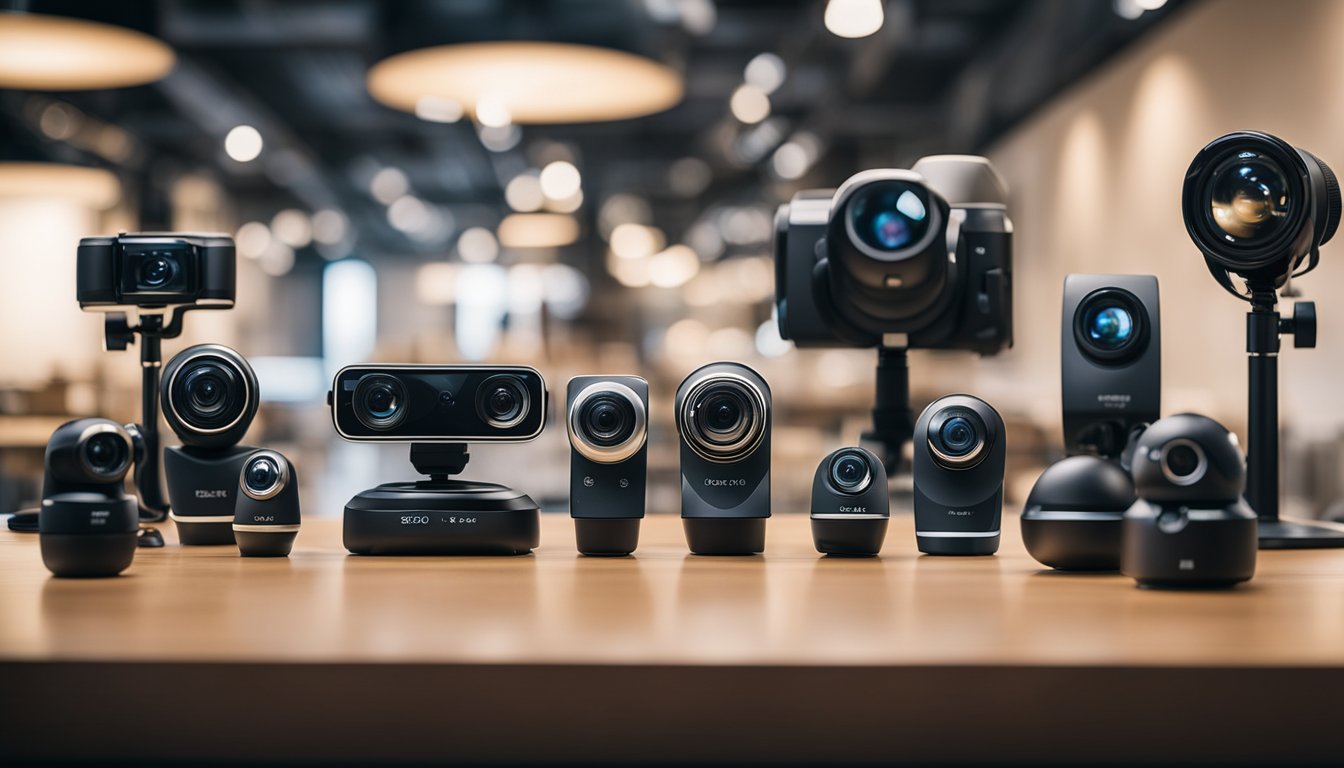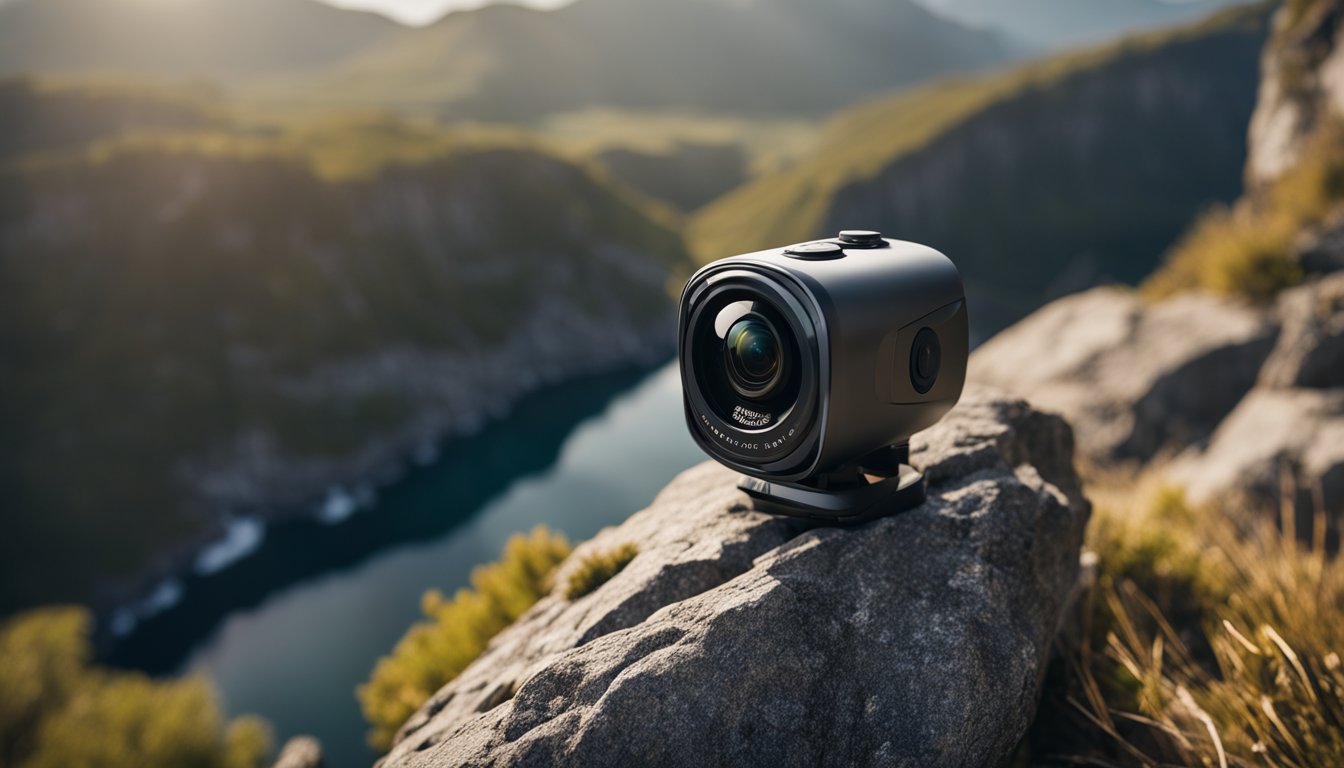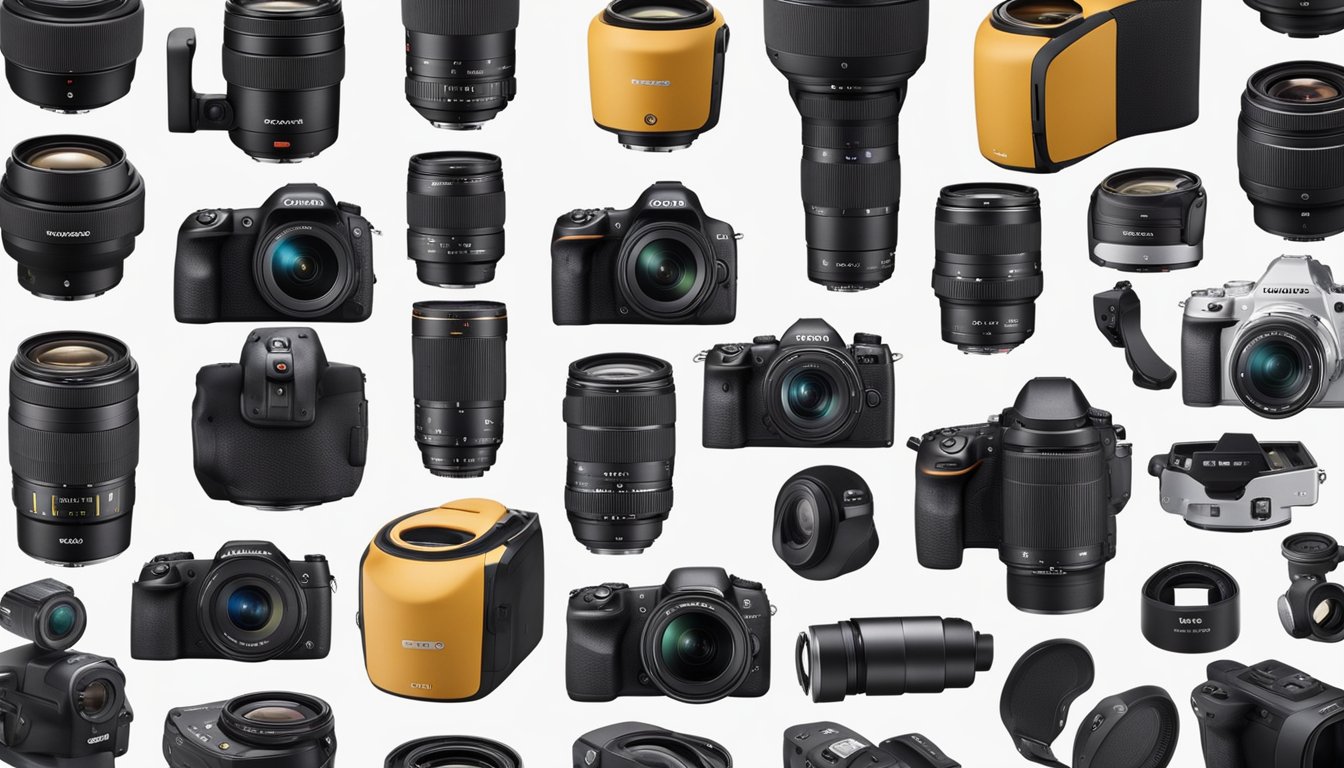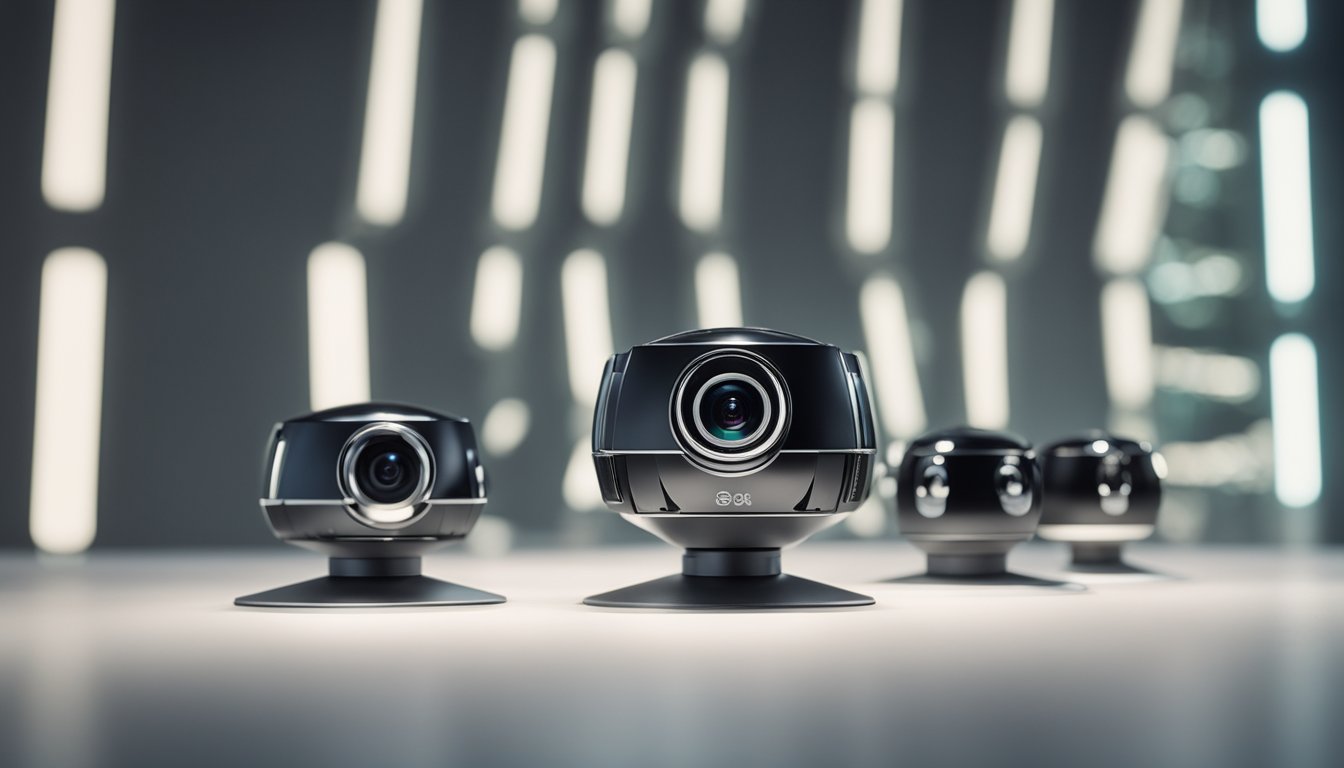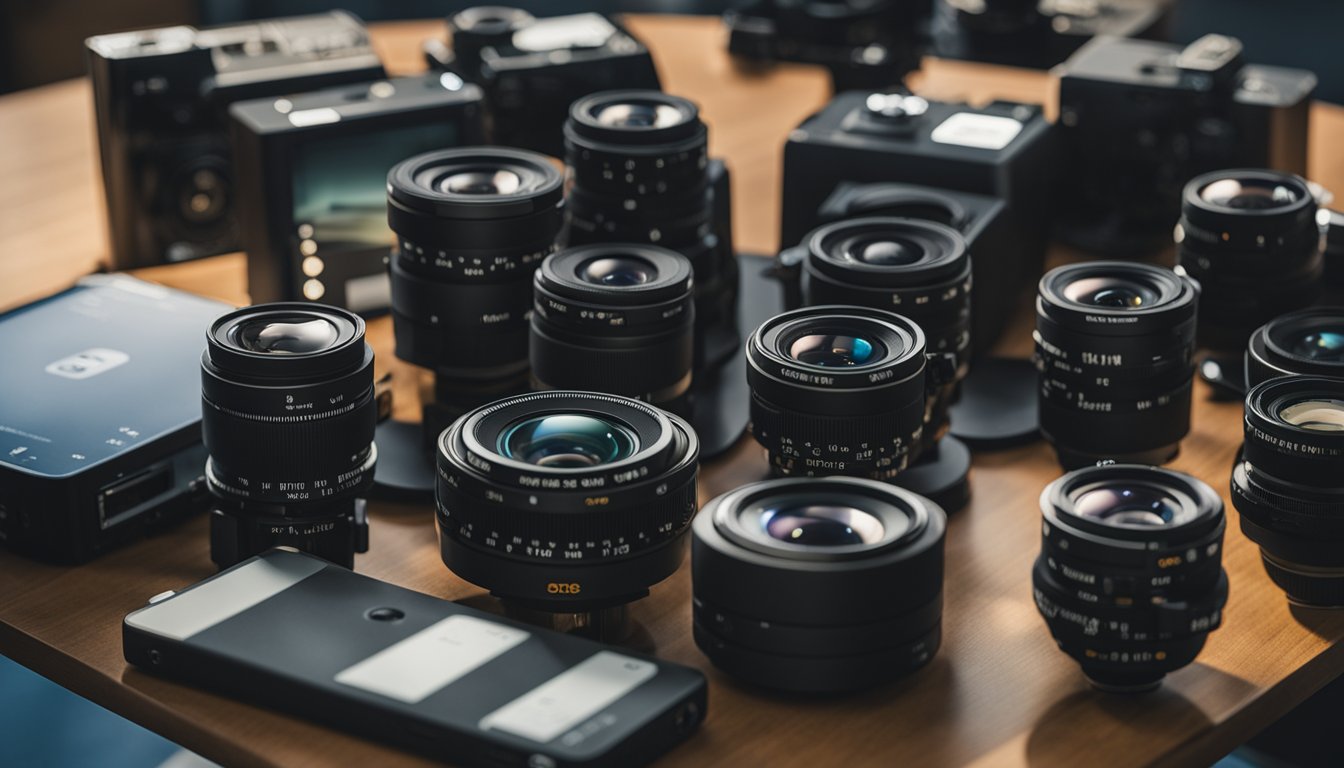Exploring the world of photography and videography can be an exciting journey, especially with the advent of 360 cameras that offer panoramic capabilities at consumer-friendly prices. If you’re on a budget, finding the best 360 cameras under $100 might seem challenging, but it’s not impossible. Affordable 360 cameras can open up new creative possibilities, allowing you to capture immersive photos and videos that give a full spherical view of the scene around you.
In recent years, technology has advanced to the point where even the less expensive options can provide satisfactory resolution, durability, and usability. Think of capturing breathtaking landscapes, lively street scenes, or memorable family gatherings with a device that fits snugly within your budget. A variety of features such as waterproof design, editing software compatibility, and adaptability to different shooting environments should also be considered when looking for a cost-effective 360 camera.
Key Takeaways
- 360 cameras under $100 offer panoramic photo and video capture for budget-conscious consumers.
- Affordable options can provide satisfactory resolution, durability, and feature sets for everyday use.
- When selecting a camera, consider key features like design, software support, and performance in various environments.
Understanding 360 Cameras
https://www.youtube.com/watch?v=Djx7f_zjba0&embed=true
When you’re exploring the world of 360-degree cameras, you’re stepping into a unique photography niche. These gadgets use two wide-angle lenses to capture a full spherical view of your surroundings, literally everything around the camera. So, what makes a good 360 camera?
-
Video Quality: You want crisp, clear footage, so look for cameras that offer high-resolution video. Typically, the higher the resolution, the better the video quality will be, immersing you fully in your panoramic shots.
-
Image Quality: Similarly, for still photos, sharpness, and color accuracy are key for those breathtaking scenic shots you’re aiming for. Your 360 photos should be vibrant and detailed.
-
Sensors: The heart of any camera is its sensor. In 360 cameras, the image sensors are crucial for capturing light and detail. A larger sensor generally means better image quality, especially in low light.
| Feature | Importance |
|---|---|
| Resolution | High |
| Stitching | High |
| Sensor Size | Medium |
Stitching, while not on the initial list, deserves a mention. It’s the process of combining images from both lenses to create that seamless spherical image. Poor stitching can ruin the immersive experience.
Remember, even in the realm of 360 cameras under $100, you can find models that perform beautifully within realistic expectations. Your adventure in panoramic photography starts with knowing what to look for, and as you get familiar with these features, you’ll be ready to capture the world in all its glory.

Top Features to Look For in Cameras Under $100
https://www.youtube.com/watch?v=FqeZGKZfcK8&embed=true
When searching for the best 360 cameras under $100, you’ll want to pay attention to a few key features that can make or break your experience.
-
Quality and Resolution: Look for cameras that offer a minimum of 5.7K resolution to ensure your videos are crisp and your photos are clear. Higher resolution means better quality footage, making your 360-degree experiences more immersive.
-
Durability and Water-Resistance: Since 360 cameras are often used in action-packed environments, a model that is waterproof or at least water-resistant is a wise choice, especially if you’re into outdoor adventures.
-
Lenses and Sensors: The lenses are your camera’s eyes, and larger sensors capture more light, leading to better image quality. Look for a camera that has dual lenses and large sensors to cover every angle with clarity.
-
Software and Editing: Your 360 camera should come with intuitive software for editing your images and videos. AI editing features can be a huge bonus, making post-production a breeze.
-
Weight and Portability: A lighter camera is easier to carry and more convenient for travel. Check the weight to ensure it won’t be a burden during your activities.
-
Storage Options: Adequate internal storage is essential, but also consider cameras with expandable storage options so you never run out of space for your breathtaking 360 content.
-
Connectivity: For ease of use, make sure your camera supports Wi-Fi or Bluetooth connectivity. This allows for seamless sharing and transferring of your media to other devices.
Keep these features in mind, and your budget-friendly camera will deliver beyond its price point, offering a balance of quality and functionality without breaking the bank.
The Best 360 Cameras Under $100
https://www.youtube.com/watch?v=IXQjYoYr-aQ&embed=true
Finding the best 360 cameras on a budget can be challenging, but there are options under $100 that stand out for their features and value.
How They Compare
- Cost: All cameras you’re considering are under the $100 price point, making them all budget-friendly.
- Resolution and Quality: Some of these cameras offer resolutions suitable for basic 360-degree photography and videography; they’re not top-tier but certainly provide a good starting point.
- Features: Look for cameras that include additional features such as Wi-Fi connectivity or waterproof casings, which add to their value.
What Sets Them Apart
- Design: The modular design of some models allows for versatility in how you use the camera.
- Value: Cameras that come with extra accessories or have unique features provide additional value for your money.
- Ease of Use: For beginners, some cameras offer user-friendly interfaces and straightforward shooting modes that make 360-degree photography accessible right out of the box.
Resolution and Video Quality
« Can You Add a 360 Camera to Your Car? Easy Upgrade Guide
What Cars Have 360-Degree Cameras: An Overview of Models with Top-Notch Visibility Features »
https://www.youtube.com/watch?v=f_X6yuo34nQ&embed=true
When you’re in the market for a 360 camera under $100, your options for resolution might be limited compared to higher-end models. However, it’s important to find a camera that offers the best video quality and sharpness within that price range.
Most budget 360 cameras will not support 5.7K video but you can still expect to capture decent 360-degree video in HD. The standard you’re likely to encounter is 1080p resolution. While this isn’t as crisp as 4K video, it can still provide a satisfactory level of detail for your panoramic shots.
Here’s a simple breakdown to remember:
- 1080p: Offers good video quality, sufficient for sharing on social media and personal viewing.
- 4K: Typically found in more expensive cameras, but it’s worth looking for deals as they provide greater clarity and detail in your footage.
To maximize the potential of your camera’s resolution, ensure that it has good stitching capabilities to produce seamless 360-degree footage. Pay attention to the specs to understand the sharpness of the final video output, as some cameras may offer enhanced features to improve the quality of the image, even if the resolution isn’t the highest.
Remember, good lighting conditions can drastically improve your video quality, compensating for lower resolution to some extent. And, keep an eye out for user reviews; sometimes real-world usage sheds light on how a camera performs beyond the numbers on a specs sheet.
Durability and Design
When you’re looking for the best 360 cameras under $100, it’s essential to consider how well they can handle everyday wear and tear. Durability is key, especially if you plan to use your camera outdoors or in various weather conditions.
Water Resistance:
First things first—water resistance. You’ll want to check if your camera can withstand splashes or a sudden downpour. Although finding a fully waterproof model at this price point is challenging, some cameras offer at least basic water resistance, which should give you a bit of confidence when using it near water.
Ruggedness:
The camera’s build quality is crucial. Look for a camera with a robust design—materials that feel solid and can potentially survive a few drops. A rubberized or textured grip can provide extra durability and prevent slips from your hands.
- Overheating Prevention:
Cameras with proper ventilation or built-in heat management are important too. This prevents overheating, extending the lifespan of the hardware during extended use.
Modular Design:
Some cameras might come with a modular design, allowing you to replace certain parts instead of buying a whole new camera. This can be both cost-effective and environmentally friendly.
| Features | Notes |
|---|---|
| Water-resistant | Limited protection against water |
| Ruggedness | Should handle minor drops and scratches |
| Overheating Prevention | Heat management for prolonged use |
| Modular Design | Replace parts, not the whole camera |
Remember, even within a budget, you have options. Just ensure you choose a camera with a design that matches your needs—a good balance between durability and practicality.
Software and Editing Features
https://www.youtube.com/watch?v=XgxW7y3Wh4g&embed=true
When you dive into the world of 360 cameras, you’ll quickly notice that software plays a pivotal role in shaping your content. Since most 360 cameras under $100 cater to enthusiasts rather than professionals, the companion editing software tends to be user-friendly and often quite intuitive.
Mobile App Capabilities
Your 360 camera likely comes with a mobile app, available for both iOS and Android, simplifying the post-capture process. Such apps usually offer automatic stitching, so your footage becomes a seamless 360-degree image without the hassle of manual editing. Moreover, these apps may enable features like live streaming, allowing you to share experiences in real-time.
Desktop Software Advantages
If you seek more control, desktop software can provide a more sophisticated suite of editing tools. Although your initial camera purchase is budget-friendly, ensure the software you plan to use doesn’t include hidden costs.
Android and iPhone users will find most of these cameras come with a compatible app. The ease with which you can transfer footage from the camera to your phone varies, so look for options that streamline this process.
Software Features to Look For:
- Automatic Stitching: For effortless panorama photos and videos.
- Editing Suite: Basic to advanced tools to tweak your 360 content.
- Live Streaming: Sharing your moments live across social platforms.
- Platform Compatibility: Ensures the app works smoothly on your device, whether it’s iOS or Android.
Remember, the right software can significantly enhance the use of your sub-$100 360 camera, turning raw footage into polished, shareable experiences.
Camera Performance in Different Environments
When you’re searching for the best 360 cameras under $100, considering how they perform in various settings is key. Here’s how to assess their capabilities:
Low Light: Low light conditions can be challenging, but some cameras tackle this well with higher ISO ranges. Look for a camera that offers a versatile ISO setting to ensure your images are bright and clear even when lighting isn’t ideal.
- Image Stabilization: A steady shot matters, especially when capturing 360-degree content. Opt for cameras that feature built-in gyroscopes or software-based stabilization methods to minimize blurriness.
Outdoor and Action Scenes:
- Gyroscope: Helpful for keeping horizon lines level, making your videos look smooth and professional.
- Active HDR: This enhances detail in your shots by balancing the light and dark areas of an image.
Live-Streaming:
- If you’re keen on sharing your experiences in real-time, check if your camera supports live-streaming with decent resolution and stability.
Remember:
- Cameras under $100 may have limitations, but you can still find options that deliver respectable results in various conditions.
- Always check camera specs for features like image stabilization and ISO range to ensure they meet your needs.
By understanding these features, you’ll be better equipped to pick a camera that suits your adventurous spirit, whether you’re capturing the bustle of a night market or the tranquility of a forest trail.
Usability and Content Creation
https://www.youtube.com/watch?v=9gQYM3oYtAI&embed=true
When you’re diving into the world of 360-degree cameras, you’ll quickly notice the immense potential they have for content creation. Not only can you capture action videos with a thrilling all-around perspective, but also create virtual tours that immerse your audience as if they were there with you.
Creating with a 360-Degree Camera
- Stills: Capture expansive landscapes in a single shot.
- Action Videos: Record your adventures with super-smooth video quality.
- Virtual Tours: Offer an interactive experience by stitching together 360-degree footage.
- 3D Models: Some cameras allow creating 3D content from your captures, perfect for VR content.
A sturdy tripod can be your best friend, keeping your camera steady to avoid any shaky footage, ensuring that your 360-degree footage is as smooth as it can be. For content creators looking to go the extra mile, certain 360 cameras come with a boost lens feature, enhancing the quality of your 2D and 3D captures even in challenging conditions.
| Feature | Benefit for Content Creation |
|---|---|
| 360-degree Footage | Offers a comprehensive view of your scene. |
| Super-smooth Video | Keeps the action fluid and watchable. |
| Boost Lens | Enhances clarity for professional results. |
Remember, as a content creator, the quality of your videos, stills, or 3D models can set you apart. Experiment with different angles and settings on your 360 degree camera to master creating captivating 2D and 3D VR content that truly engages your audience.
Photography and Still Images
https://www.youtube.com/watch?v=k_xGcuy4_fs&embed=true
In the world of 360-degree photography, capturing stunning still images is both an art and a science. When selecting a camera under $100 for your photography needs, consider the photo quality which can vary widely between models. Even at a lower price point, you can find cameras that offer a decent resolution for your stills. Remember, high resolution can lead to clearer and more detailed photos.
For capturing premium quality still images, look out for features such as HDR (High Dynamic Range) mode that enhances contrast and color. It’s handy in situations with varying lighting conditions – think bright skies and shadowed landscapes. Some models might also support manual settings, allowing you to fine-tune the exposure and white balance to get the photo just right.
Here’s a quick glance at what to look for:
- Resolution: Higher resolution means more details.
- HDR Mode: Creates balance in high contrast scenes.
- Manual Settings: Gives you control over the shot.
You should also check if the camera comes with editing software. This is a great tool to help spruce up your still images after you’ve captured them. Moreover, consider the stitching quality of the camera as it affects how seamless your final photo appears.
Keep in mind that at this price range, you might compromise on some advanced features but you can still capture quality images that are perfect for sharing with friends and family or posting on social media. Happy snapping!
The Ecosystem of Accessories
When selecting the best 360 cameras under $100, don’t forget the importance of accessories. They can significantly expand your camera’s capabilities and enhance your overall experience.
Choosing the Right Storage Options
For a 360-degree camera like the Insta360, you’ll need a reliable microSD card to store your panoramic creations. Capacities range widely, but a 64GB card provides a good balance between cost and storage space, ensuring you don’t miss capturing those immersive moments due to a lack of space.
Connectivity Accessories
Your camera’s connectivity is essential for transferring files and live streaming. GoPro MAX offers modular components for added flexibility. Invest in compatible cables or wireless adapters to connect to your devices seamlessly. A sturdy tripod can serve as a stand during live broadcasts, ensuring stable and clear footage.
Enhancing the Experience with Add-Ons
To fully exploit the potential of 360-degree cameras, consider lenses and protective casings, which come tailored for specific models like Insta360. Upgrading lenses can improve image quality, while additional casings extend the camera’s durability, especially in extreme conditions.
Future of Affordable 360 Technology
The realm of 360 cameras is rapidly advancing, and the good news for you is that affordability is a key focus. You can already find options like the Insta360 Nano, designed to be budget-friendly, but future devices are expected to pack more features without hefty price tags.
Trends to Watch:
- Higher Resolution: Although cameras like the QooCam 8K and Ricoh Theta Z1 offer impressive clarity, prices may drop, bringing 8K quality into the sub-$100 range.
- Enhanced Compatibility: Expect cameras like the Insta360 ONE R to work seamlessly with an increasing array of devices, including smartphones and drones.
- Software Upgrades: User-friendly editing tools should enhance the 360 experience, making the Insta360 X3 and others even more versatile.
What This Means for You:
- Ease of Use: Future 360 cameras will prioritize intuitive controls, following the industry trend set by consumer-friendly models like Samsung Gear 360.
- Integration With Other Tech: Cameras like Insta360 One X2 might get even better at working together with action cams, GoPros, and drones, creating a comprehensive capture system.
Hardware Developments:
- Compact Design: The evolution of Insta360 Nano S suggests that the physical form of future cameras will be more portable.
- Battery Life: Longer-lasting batteries might become standard, so you’re ready to shoot at a moment’s notice.
Finally, software like Fusion and Slice should evolve to let you manage and edit your 360 footage more efficiently. The future looks bright — and affordable — if you’re eager to dive into the world of 360 photography and videography.
Frequently Asked Questions
Navigating the world of budget-friendly 360 cameras can be straightforward with the right information. Here, you’ll find specific answers to commonly asked questions that will help you choose the perfect 360 camera for your needs without overspending.
What are some good budget-friendly 360 cameras for motorcycles?
For motorcycle enthusiasts, you might find cameras like the Insta360 ONE X2 useful for capturing rides, as it offers great stabilization and fits well within a moderate budget.
Can you recommend an affordable 360 camera with 4K video capabilities?
Yes, the Insta360 ONE R is an excellent choice for 4K video recording and offers modular versatility at a price that’s relatively easy on the wallet.
How much should I expect to spend on a decent 360 video camera?
For a decent 360 video camera that balances quality and price, anticipate spending around $400 to $500. Devices like the GoPro Max are great options in this range.
What’s the top-rated 360 camera that won’t break the bank?
The Insta360 X3 has received high ratings and offers robust features while still being considered affordable for most.
Are there any low-cost 360 cameras suitable for car recordings?
Indeed, the Insta360 Go 2 is compact and versatile for car recordings and comes at a lower entry price compared to others.
What are the most cost-effective 360 action cameras currently available?
For action-seekers, the Insta360 ONE series provides several cost-effective options that offer durability and high-quality video capture, perfect for capturing dynamic activities.

